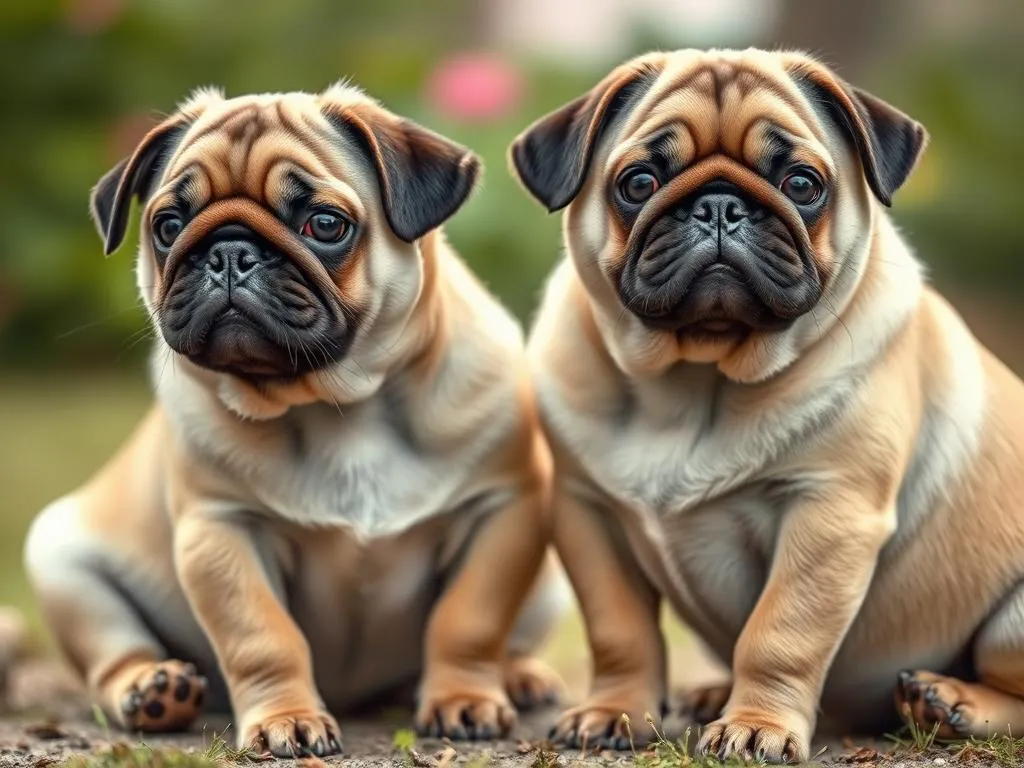
Introduction
Pugs have gained immense popularity as family pets over the years, and their charming personalities make them a delightful addition to many households. Their unique appearance and endearing quirks often capture the hearts of both adults and children. However, when considering adding a pug to your family, it’s essential to understand their compatibility with children. The main question arises: Are pugs good with kids? This article aims to explore this question by providing a comprehensive overview of pugs, their characteristics, and how they interact with children. We’ll delve into their history, temperament, and tips for ensuring a harmonious relationship between pugs and kids.
Understanding Pugs
History and Origin of Pugs
The pug’s history dates back to ancient China, where they were bred as companion animals for royalty. They were highly valued and often pampered by emperors, showcasing their importance in early cultures. Over time, pugs made their way to Europe, where they became popular among the aristocracy, especially in the Netherlands and England. Today, pugs are celebrated worldwide for their affectionate nature and charming demeanor.
Physical Characteristics
Pugs are small dogs, typically weighing between 14 to 18 pounds, with a height of about 10 to 14 inches at the shoulder. Their compact, muscular bodies and distinctive wrinkled faces make them easily recognizable. Pugs come in various colors, including fawn, black, and silver, and their short, smooth coats require minimal grooming. Their expressive eyes and curled tails only add to their unique appearance, making them one of the most beloved dog breeds.
Personality Traits
The general temperament of pugs is friendly, playful, and affectionate, making them excellent companions for families. They thrive on human interaction, often following their owners around the house and seeking attention. Pugs are known for their sociable nature, adapting well to various environments, which is particularly beneficial when introducing them to children. Their playful demeanor and love for fun make them a great match for energetic kids.
Pugs and Children
General Compatibility of Pugs with Kids
When it comes to compatibility, pugs generally exhibit a gentle demeanor around children. Their playful and affectionate nature can make them excellent playmates for kids. In comparison to other dog breeds, pugs are often more patient and tolerant, which can be particularly valuable when interacting with younger children. Their adaptability allows them to fit seamlessly into family life, making them an ideal choice for households with children.
Benefits of Having a Pug with Children
Having a pug in a home with children comes with numerous benefits:
- Companionship and Loyalty: Pugs are known for forming strong bonds with their families. They provide unwavering loyalty, making them reliable companions for children.
- Playfulness and Energy Levels: Pugs love to play and engage in activities, which can keep children entertained and active. Their playful nature encourages outdoor playtime, fostering a healthy lifestyle for both the dog and the kids.
- Low Maintenance Grooming Needs: Unlike some breeds that require frequent grooming, pugs have minimal grooming needs, making them more manageable for busy families.
Potential Concerns
While pugs are generally good with kids, there are some considerations to keep in mind:
- Size and Physical Limitations: Pugs are small dogs, which means they may be more vulnerable to rough play. It’s important to teach children to interact gently with pugs to avoid unintentional harm.
- Health Issues: Pugs are prone to certain health problems, including respiratory issues due to their brachycephalic (flat-faced) structure. This can affect their ability to engage in prolonged play sessions, especially in hot weather.
- Teaching Children How to Interact Safely: It’s crucial to educate kids on how to approach and play with pugs. Teaching them to respect the pug’s space and boundaries is essential for ensuring safe interactions.
Tips for Introducing Pugs to Children
Preparing Your Home
Creating a safe environment for both the pug and children is vital. Here are some tips to prepare your home:
- Designate Spaces: Set up a comfortable area for the pug where they can retreat when they need a break from playtime. This space can be a crate or a cozy bed in a quiet corner.
- Childproofing: Ensure that any small toys or items that could be harmful to the pug are kept out of reach. This will help prevent accidents and keep both the pug and children safe.
Teaching Children About Dog Behavior
Educating children about dog behavior is crucial for fostering a positive relationship with the pug:
- Understanding Dog Body Language: Teach kids to recognize signs of stress or discomfort in the pug, such as growling, backing away, or showing teeth. This knowledge will help them understand when to give the pug space.
- Respecting Boundaries: Kids should learn the importance of respecting the pug’s personal space. Encourage them to avoid approaching the dog when they are eating or sleeping.
Supervised Interactions
Supervision is key when introducing pugs to children:
- Guidelines for Initial Meetings: When initially introducing a pug to children, keep interactions calm and gentle. Allow the pug to approach the children on their own terms.
- Monitoring Playtime: Always supervise playtime between pugs and children, especially during energetic activities. This will help prevent any accidental injuries and ensure a safe environment for both.
Training and Socialization
Basic Training for Pugs
Training is essential for ensuring that pugs behave well around children:
- Importance of Obedience Training: Teaching basic commands such as sit, stay, and come can help control the pug’s behavior and promote a positive environment for children.
- Recommended Training Methods: Positive reinforcement techniques, such as treats and praise, are effective for training pugs. This approach encourages good behavior and strengthens the bond between the pug and the family.
Socialization Strategies
Socializing pugs with children and other pets is crucial for their development:
- Importance of Socialization: Exposing pugs to various environments, people, and animals helps them become well-adjusted and confident. This is particularly important when introducing them to children, as it prepares them for different interactions.
- Activities for Socialization: Consider participating in puppy classes or dog parks where pugs can interact with other dogs and families. This exposure can enhance their comfort level around children and promote positive experiences.
Real-Life Experiences and Testimonials
Case Studies of Families with Pugs
Many families have shared positive experiences with pugs and children:
- Family Stories: One family reported that their pug, named Bella, became an inseparable companion for their daughter. Bella’s playful nature encouraged their daughter to be more active, resulting in countless hours of fun and laughter.
- Positive Outcomes and Challenges: While most families found pugs to be excellent with kids, some noted challenges such as the need for supervision during playtime. However, they emphasized that the rewards of having a pug far outweighed any difficulties.
Expert Opinions
Insights from professionals can provide valuable guidance for families considering a pug:
- Veterinarians’ Insights: Many veterinarians emphasize the importance of regular health check-ups for pugs, especially concerning their respiratory health. They recommend keeping play sessions short and monitoring the pug for any signs of distress.
- Dog Trainers’ Recommendations: Professional dog trainers often suggest starting training early and involving children in the process. This not only teaches the pug good behavior but also fosters a strong bond between the dog and children.
Conclusion
In conclusion, the question of whether pugs are good with kids can be answered affirmatively. Their affectionate, playful nature makes them excellent companions for families, and their adaptability allows them to fit seamlessly into various household dynamics. While there are considerations to keep in mind, such as their size and potential health issues, the benefits of having a pug with children far outweigh any concerns. With proper training, socialization, and education about safe interactions, pugs can thrive in family environments, creating lasting memories and companionship for years to come. As you contemplate welcoming a pug into your home, consider your family dynamics and the unique needs of both your children and the dog to ensure a harmonious relationship.









